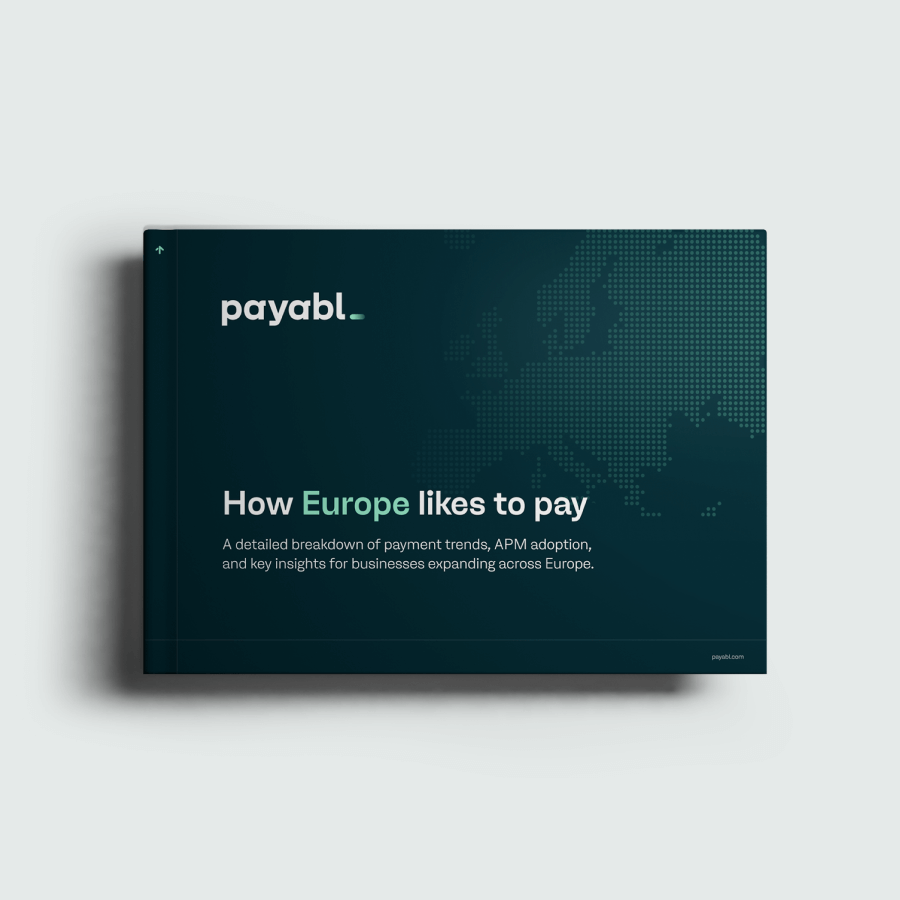
The European payments ecosystem is vast, fragmented, and continues to grow rapidly. The total transaction value in the digital payments market alone is now projected to reach $2.53 trillion in 2025. And according to our latest research, 60% of European e-commerce transactions are now made through alternative payment methods.
That means the way consumers prefer to pay is changing. Across Europe, alternative payment methods (APMs) are quickly gaining traction, with digital wallets, open banking powered instant transfers, and Buy Now, Pay Later (BNPL) options all moving mainstream. These shifts aren’t just simply trends, they reflect fundamental changes in consumer behaviour, technology, and regulation. These forces are combining to reshape the payments landscape.
And each market has a favourite flavour. From Bizum in Spain to iDEAL in the Netherlands, BLIK in Poland, and Zimpler in Sweden, local APMs have become deeply embedded in each market, reflecting the unique tastes of their populations.
If you’re looking to expand into new markets across the region, sustained success hinges on understanding local payment landscapes and integrating the right APMs into your checkout experience.
Navigating cross-border payments now requires much more than just offering a one-size-fits-all solution—merchants must adapt to the expectations of consumers who prioritise speed, security, and seamless transactions.
At payabl. we have unpicked the market's nuances and outlined key facts our latest APM report to streamline your strategy.
Taking a tour of the European payments landscape
Our new report provides a detailed analysis of how the continent’s different markets prefer to pay, highlighting key APMs and the factors driving their adoption.
By examining trends across Southern, Western, Northern, and Eastern Europe, as well as the Baltics, we offer fresh insights that you can use to optimise checkout experiences, improve conversion rates, and drive growth.
Regulatory initiatives like Payment Services Directive 3 (PSD3) and the European Digital Identity Wallet are rippling across the European Union (EU) and beyond, aimed at enhancing security, interoperability, and consumer trust, while further accelerating the shift towards digital payments. But there’s a lot more to consider when you scratch the surface of each market.
Reshaping digital payments in Southern Europe
Starting with Southern Europe, the financial landscape has been so far characterised by fragmented and unsynchronised digital payments and mobile money transfer services. However, recent developments are promising to reshape this reality.
Spanish mobile payment provider Bizum, Italy’s ATM operator Bancomat, and Portugal’s SIBS, the company behind MB WAY, recently signed a landmark agreement to enhance interoperability between their mobile payment solutions. This initiative has materialised into EuroPA, a new cross-border payment system designed to enable instant, secure, and frictionless mobile transactions across the markets involved.
Western Europe's cashless revolution
Western Europe, meanwhile, remains at the forefront of Europe’s cashless revolution, driven by rising consumer demand for digital payments, government-led tax reforms, and regulatory shifts.
As e-commerce continues to expand, payment providers are working towards greater interoperability, with initiatives like wero by the European Payments Initiative (EPI) leading the charge. With wero steadily growing its footprint across France and Belgium, it has now also been announced that Nexi will begin connecting the first German merchants to the wallet in Q3 2025.
Despite such developments, fragmentation remains a challenge in Western Europe. Even neighbouring countries can differ significantly—some still rely heavily on cards, while others have embraced digital wallets, bank transfers, and other APMs as their primary payment options. iDEAL, for example, dominates the Dutch e-commerce market, offering seamless real-time bank transfers without the risk of chargebacks.
Digitalisation redefining commerce in Nordics
The Nordics are also helping to drive the cashless revolution, driven by high digital adoption, strong banking infrastructure, and a tech-savvy population. Mobile wallets, contactless payments, and account-to-account (A2A) transfers—such as those enabled by Sweden’s Zimpler—have become the preferred payment methods, accelerating the region’s transition away from cash.
As digitalisation reshapes commerce, businesses must adapt to local payment preferences, leverage Open Banking innovations, and prioritise seamless, secure transactions. Those who embrace the Nordics' digital-first mindset will be best positioned to succeed in one of the world’s most advanced and interconnected payments ecosystems.
Expansion of fintech in Eastern Europe
Moving on to Eastern Europe, the region is witnessing a strong push toward digital and mobile payment solutions, driven by the increasing penetration of smartphones and the expansion of fintech services. As digitalisation transforms commerce, businesses expanding into Eastern Europe must understand local payment preferences, leverage regulatory changes like the Instant Payments Regulation, and integrate popular APMs, such as Poland’s BLIK, to cater to an increasingly cashless consumer base.
A BNPL boom in the Baltics
Finally, the payments landscape in the Baltics is also on the cusp of major transformation, driven by technological advancements, evolving consumer behaviour, and increased competition from fintechs. The BNPL market is booming, with ESTO leading flexible payment solutions across Estonia, Latvia, and Lithuania as consumers seek more control over their spending.
Payments are becoming more digital, seamless, and borderless. If you can adapt to these changes whilst building a deeper understanding of each market, then you will stay ahead of the curve. Download How Europe likes to pay: A region-by-region guide to APM adoption and understand and capitalise on the continent’s payment complexities.
